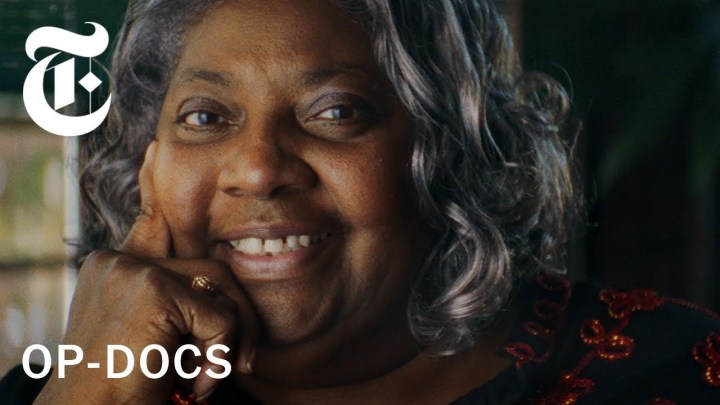
“The Queen of Basketball”

In May, “Econ Extra Credit” will be featuring several short documentaries rather than a feature-length one. This week, we’re watching Oscar-winning short “The Queen of Basketball,” and looking at what’s changed since pioneer Lusia Harris got in the game.
The 22-minute film is available to stream for free on YouTube and The New York Times’ website.
Title IX was a gamechanger for women athletes, requiring schools that received federal funding to treat women’s and men’s teams “equal in effect” and pushing schools to expand opportunities for women to play.
In the 1970s, Lusia Harris took advantage of those new opportunities, enrolling at Delta State University in Cleveland, Mississippi, so that she could play center on the women’s basketball team. She didn’t just play; she dominated. Our documentary selection for this week, “The Queen of Basketball,” tells her story as one of the first female superstars in basketball.
Harris and her teammates were incredibly successful on the court. They went on to win three consecutive national championships. And in 1977, the then-New Orleans Jazz selected Harris as the 137th overall pick in the NBA draft. She became the first woman ever officially chosen to play with and against male pros, but she ultimately turned down the opportunity.
“Part of her not going to the NBA is she wanted to keep competing against women,” her son, Chris Stewart, told ESPN.
Harris’s selection in the NBA draft came almost 20 years before the Women’s National Basketball Association was founded. Had Harris played ball in college now, she would have that chance to go pro in the WNBA. But the opportunities for women players are still nowhere near equal to their male counterparts. A lot of it has to do with the money.
Base salaries for WNBA players range between $62,285 to $234,936. Some stars could make as much as $700,000 with bonuses and marketing deals, but the average player makes $147,745. That is hundreds of thousands below the minimum NBA salary of $953,000 and a tiny fraction of what the average NBA player made in 2022-23 season, about $6.6 million. (Part of the salary discrepancy is due to the NBA season being almost twice as long. The men’s league has 82 regular season games compared to the WNBA’s 40 regular season games.)
While WNBA players know parity with the NBA isn’t realistic, they are looking to get a larger cut. NBA players’ salaries are 50% share of total revenue; WNBA players only get a cut of incremental revenue, that is, revenue above the league’s target for the season. Women pros’ share of total revenue dropped to 9.3% in 2022, while the league’s revenues have almost doubled in the past four years.
To earn more, nearly half of the league’s 144 players also compete internationally during the off season, where they can make as much as $1 million. Athletes Unlimited Basketball, a new player-run five-week competition, which held its second season in February and March, offers WNBA players an alternative, albeit less lucrative, way to earn more without playing overseas.
The WNBA’s revenue may be lower and its fanbase smaller, but women’s sports leagues have an advantage over the already popular men’s sports teams: the opportunity to grow. During the first year of the pandemic, almost all men’s sports leagues saw viewership shrink, but the audiences for the WNBA and the National Women’s Soccer League grew.
Plus, comparing the player salaries, revenues or audience size of a fledgling 27-year-old league like the WNBA to an older, more established league like the NBA can lead to misconceptions about the women’s league success or lack thereof. The Washington Post’s Jacob Bogage wrote in 2017 that even though the WNBA wasn’t profitable in its first two decades, business wasn’t as bad as it might seem, especially when you look at the NBA in 1966, when it was 20 years old.
Last year, the WNBA raised more than $75 million from dozens of private investors, much of which it said at the time would be used to strengthen the league’s business model. In the next few years, the league could also expand, adding more teams in new cities — Toronto and San Francisco are two of the likely frontrunners. That would result in more games, more players and more competition. As a result, one could hope for more entertaining and unexpected seasons that attract more fans and more money for players.
There’s a lot happening in the world. Through it all, Marketplace is here for you.
You rely on Marketplace to break down the world’s events and tell you how it affects you in a fact-based, approachable way. We rely on your financial support to keep making that possible.
Your donation today powers the independent journalism that you rely on. For just $5/month, you can help sustain Marketplace so we can keep reporting on the things that matter to you.
















